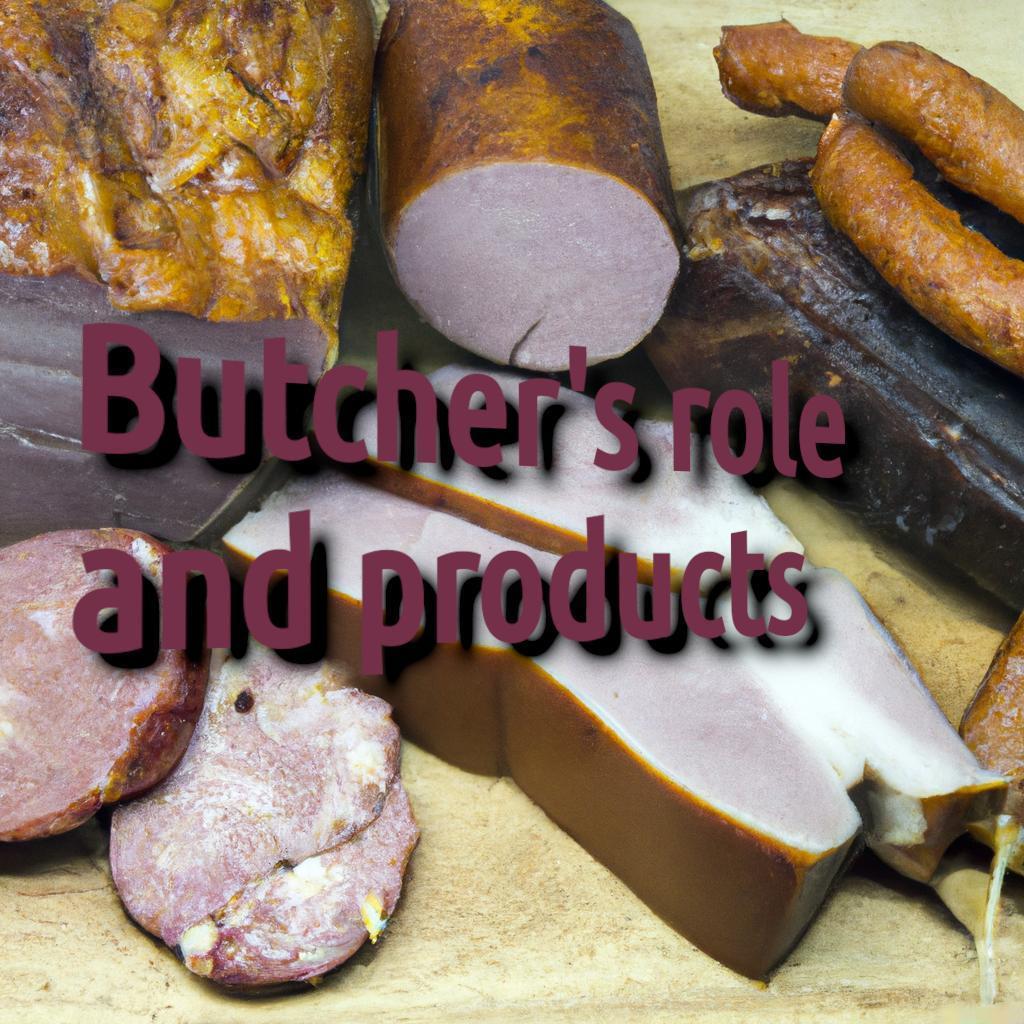


In the intricate dance of culinary evolution, the history of butchers unfolds as a narrative carved from the very essence of human survival, trade, and the pursuit of flavor.
Primitive Beginnings:
The art of butchery traces its roots to the earliest chapters of human history. Primitive hunters discovered that skillful dissection of the game allowed for efficient utilization of every part, laying the groundwork for what would become the noble craft of the butcher.
The Rise of Butcher Guilds:
As communities evolved into civilizations, the role of the butcher became increasingly specialized. In medieval Europe, butcher guilds emerged, providing a sense of order to the trade. These guilds not only regulated the profession but also elevated it to a position of importance within the social fabric.
From Street Markets to Shops:
During the Renaissance, bustling street markets were the epicenter of the meat trade. However, as urbanization progressed, dedicated butcher shops emerged. The open-air markets that once echoed with the calls of butchers became brick-and-mortar establishments, offering a more controlled and sanitary environment.
Industrialization and the Modern Butcher Shop:
The 19th century witnessed significant changes in butchery with the advent of industrialization. Innovations in refrigeration and transportation allowed for the centralization of meat processing, giving rise to large-scale slaughterhouses. However, traditional butcher shops persisted, emphasizing quality, personalized service, and a connection to local communities.
The Corner Butcher:
The mid-20th century saw the iconic corner butcher shop becoming a fixture in neighborhoods. Customers built relationships with their local butchers, relying on their expertise to select the finest cuts and provide cooking tips. The role of the butcher extended beyond commerce to one of trusted culinary advisors.
Challenges and Revival:
The latter part of the 20th century brought challenges for traditional butchers, with supermarkets and large-scale grocery chains dominating the market. However, a revival of interest in sustainable, locally sourced meat has breathed new life into independent butcher shops. Artisanal butcheries, with a focus on quality, ethical sourcing, and craft, have carved a niche for themselves in the modern culinary landscape.
Butchers in the Digital Age:
In the 21st century, the age-old trade of butchery encounters the digital realm. Online platforms connect consumers with artisanal butchers, allowing for the direct purchase of high-quality meats. Social media and food influencers celebrate the craftsmanship of butchers, bringing their expertise into the spotlight.
A butcher plays an important role in our lives by providing us with a wide variety of fresh and high-quality meat products. They are responsible for cutting, preparing, and packaging meat for sale to customers.
Butchers work with different types of meat, including beef, pork, lamb, poultry, and game, and they have a wealth of knowledge about the different cuts and cooking methods that work best for each type of meat. They are also responsible for ensuring that the meat is properly stored and handled to maintain its quality and safety.
In addition to providing us with meat products, butchers also play a role in supporting local agriculture and the local economy. They often source their meat from local farms and suppliers, which helps to support small-scale and sustainable farming practices.
Butchers play an important role in our lives by providing us with high-quality meat products, supporting local agriculture, and helping us to make informed decisions about the meat we consume.
Butchers and vegetarians have different perspectives on the consumption of meat. While butchers work to provide high-quality meat products to customers, vegetarians choose not to consume meat for various reasons, such as ethical, environmental, or health concerns.
However, it's important to note that not all butchers and meat producers operate in the same way. There are some who prioritize animal welfare, sustainable farming practices, and environmentally responsible methods of production. By choosing to support these types of producers, some vegetarians may feel more comfortable consuming meat products.
Ultimately, whether someone chooses to consume meat or not is a personal decision. Butchers play an important role in providing meat products to those who choose to consume them, while vegetarians may choose to seek out alternative sources of protein and nutrients.
Butchers today offer a wide range of services and products to their customers. In addition to providing high-quality meat products, many butchers offer specialty items, such as handmade sausages, charcuterie, and marinated meats. They may also offer prepared foods, such as deli sandwiches or ready-to-cook meal kits.
Butchers may also provide additional services, such as meat preparation and cooking advice. They can help customers choose the best cuts of meat for their specific needs and provide guidance on cooking methods and recipes. Some butchers even offer custom butchering services, where customers can request specific cuts of meat or have meat products customized to their preferences.
With the increasing demand for sustainable and ethically produced meat, many butchers also prioritize responsible and environmentally conscious farming practices. They may source their meat from local farms and suppliers, and prioritize animal welfare and environmental sustainability in their production methods.
Butchers continue to provide valuable services and high-quality meat products to customers, while also adapting to changing consumer preferences and trends in the food industry.
There are many different types of meats and meat products available, including:
Beef: This is one of the most popular types of meat and can be used for a variety of dishes, from hamburgers and steaks to stews and roasts.
Pork: Another commonly consumed meat, pork can be found in dishes like bacon, ham, sausages, and pork chops.
Poultry: This includes chicken, turkey, and duck, which can be used in a variety of dishes like roasted chicken, turkey sandwiches, and duck confit.
Lamb and goat: These meats have a distinctive flavor and can be found in dishes like lamb chops, roast leg of lamb, and goat curry.
Game meats: These meats come from wild animals and can include venison, elk, bison, and wild boar. They are often used in stews and roasts.
Deli meats: These are precooked, sliced meats that can be used for sandwiches or in salads. Examples include ham, turkey, and roast beef.
Sausages: These are made by grinding meat and spices and stuffing them into casings. They can be found in a variety of flavors, such as Italian sausage, bratwurst, and chorizo.
Bacon: This is a cured meat made from pork belly and is commonly used as a breakfast food or added to sandwiches and salads.
Jerky: This is a dried meat product that is often made from beef, but can also be made from other meats like turkey, chicken, or pork.
Meat alternatives: With the rise in popularity of vegetarian and vegan diets, there are now many meat alternatives available, such as tofu, seitan, and tempeh, which can be used in place of meat in many recipes.
As we carve through the annals of butchery, from the primal beginnings of hunting to the modern revival of artisanal craft, the history of butchers stands as a testament to the enduring importance of those who wield the knife. Beyond the cuts of meat, butchers have carved their legacy into the very heart of culinary traditions, ensuring that the age-old art of butchery continues to sizzle and sear through the ages.
Have a good steak!

We use cookies
We use cookies and other tracking technologies to improve your browsing experience on our website, to show you personalized content and targeted ads, to analyze our website traffic, and to understand where our visitors are coming from. Privacy Policy.